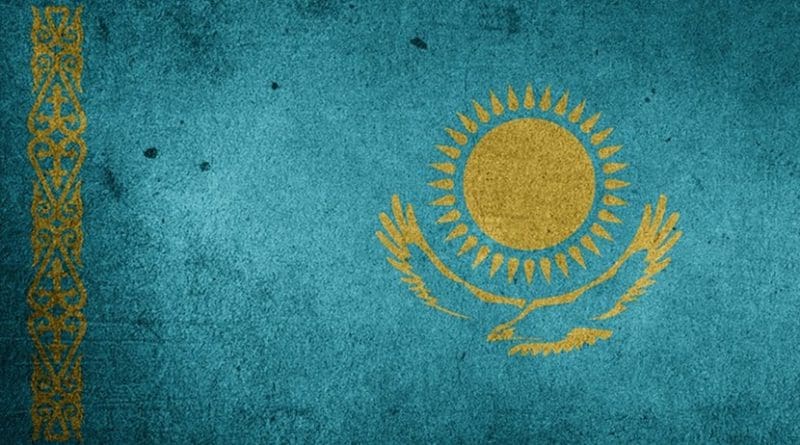Following The Trend: Kazakhstan’s Planned Alphabet Change – Analysis
On October 26, 2017, Kazak President, Nursultan Nazarbayev, decreed that the Kazakh language was going to switch from the Cyrillic Script to the Latin Script by 2025. The new alphabet is set to contain 32 letters, nine of which will have apostrophes. The switch represents an ambitious plan by national authorities and will cost the government a considerable amount when factoring in re-education needs.
Indeed, the new initiative that the Kazakh government has opted to undertake represents one of the largest language planning initiatives in recent years. However, the notion of changing script is not unique to Kazakhstan. Instead, Kazakhstan is merely following in the footsteps of other Soviet Republics who have changed their alphabet in recent years.
Since the collapse of the Soviet Union, five former Soviet Republics have changed their alphabet, Moldova, Azerbaijan, Uzbekistan, the Turkmenistan and now Kazakhstan. The recent trend of changing has been influenced by economical concerns, as many believe the Latin alphabet has a positive impact in attracting outside investment to the country. However, for many, changing the alphabet has often had political connotations, with newly independent republics wishing to get rid of the Cyrillic script, often associated with Russian imperialism, and replace it with a national script.
Prior to the Bolshevik Revolution, there were very few developed languages within the Russian Empire. Following the revolution, the Soviet authorities initiated a campaign called ‘indigenisation’. The purpose of the campaign was to encourage ethnic groups to get involved in their local state apparatus. As part of this campaign, the Soviets developed the numerous under developed languages across the Soviet Union. As a result, languages were standardised, and new writing systems were used. Initially, Soviet language planners used the Latin script, as the Cyrillic script was associated with the Tsarist Empire. However, this trend was short lived and by the end of the 1930s, the Cyrillic script was imposed on all languages.
The situation remained the same until the advent of Mikhail Gorbachev’s glasnost and perestroika.
Moldova was the first of the aforementioned Soviet Republics to change their alphabet. The Cyrillic script had been used in Moldova as evidence that the Moldovan and Romanian people spoke two different languages. On 31 August 1989, the Moldovan Supreme Soviet passed a series of language laws, one of which mandated that the Latin script was to be used for the Moldovan language.
The political undertones of the language legislation were clear, as the legitimacy of Soviet rule in the region hinged upon the claim that Moldovans and Romanians were different. The removal of the Cyrillic script proved that they were the same. Seeing what was coming, Russian speakers in the Transnistrian region claimed the laws were discriminatory and attempted to secede from Moldova. This started a struggle for independence, which caused a short but bloody civil war and resulted in Transnistria achieving de-facto independence.
Azerbaijan, Turkmenistan and Uzbekistan, perhaps learning from Moldova, all waited until the Soviet Union had collapsed before making any adjustments to their language. In Azerbaijan, a Uniform Turkic Latin Alphabet was promoted during until the late 1930s. Following this period, driven by a desire to isolate Soviet Azeris from their ethnic kin in neighbouring Iran, the Cyrillic script was imposed on the people. Following the collapse of the Soviet Union, the new government quickly rushed to adopt the Latin script once again.
The situation was similar in both Turkmenistan and Uzbekistan. Turkmen was written in the Arabic script, then the Latin script, and eventually the Cyrillic script, with the switch being made around the same time as Azeri and Moldovan. Following independence, the Turkmen president, Saparmurat Niyazov, immediately instigated a return to the Latin script. The first script had some strange letters, which were rectified in 1999. Uzbekistan also adopted the Latin script following independence, however, the Cyrillic script has remained prevalent in many areas.
There are a number of lessons which Kazakhstan can draw from the failures of the other former-Soviet states. Firstly, Kazakhstan must be careful not to isolate their ethnic Russian population. Kazakhstan has the second highest population of ethnic Russians outside of Russia, after Ukraine. The changing of Kazakh from the Cyrillic to the Latin script is surely going to make learning the language more different for ethnic Russians. This is certainly the case in Moldova, were some ethnic Russian’s have still refused to learn the language.
Kazakhstan was also right to hold off on initiating any sort of language reforms in the immediate aftermath of independence. Given the chaos caused by the collapse of the Soviet Union, as the former republics attempted to transition to market economies, which alphabet was employed was likely of little relevance to the people. This would likely explain the failure to fully implement the Latin script in Uzbekistan and the need to revise the script in Turkmenistan.
Kazakhstan’s decision to change to the Latin script now is interesting. All of the aforementioned regions changed to the Latin script to assert their independence. However, Kazakhstan’s switch to the Latin script comes at a time when integration with Moscow appears high on the agenda. Indeed, the claim that it will open Kazakhstan up to outside investment is strange, given that Kazakhstan is integrating into the Eurasian Economic Union. Whatever the reasoning, Kazakhstan is making the right choice by phasing in the new alphabet. Only time will tell whether doing so was the right decision.
*Keith Harrington, NUI Travelling Scholar in Humanities and Social Sciences, PhD Candidate, History Department, Centre for European and Eurasian Studies, Maynooth University.

